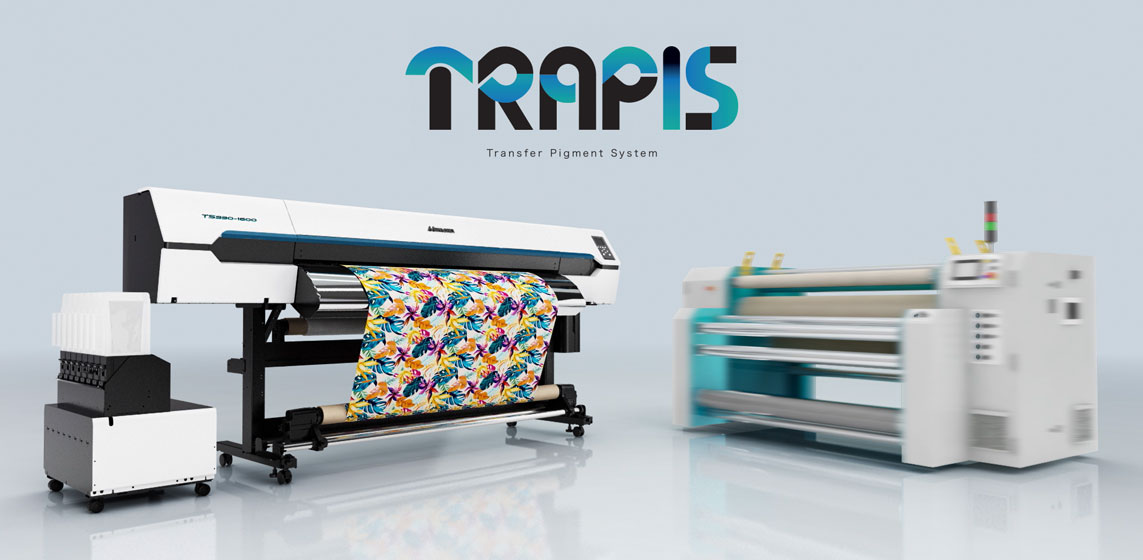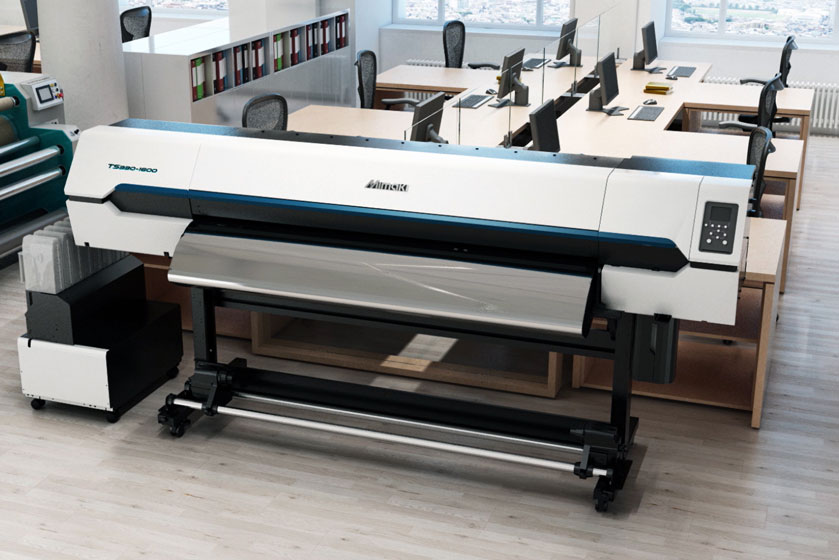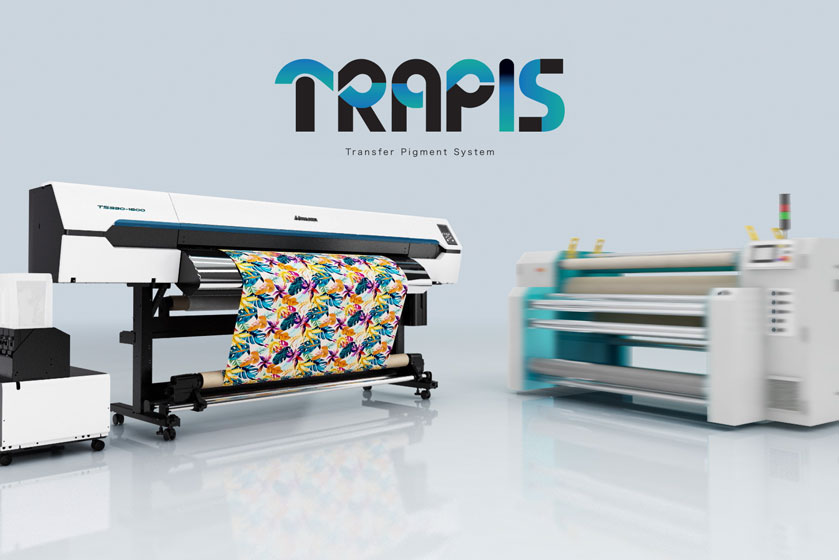
• TRAPIS, das neue von Mimaki entwickelte Textil-Transferdrucksystem für Pigmenttinte, erzeugt bedeutend weniger Abwasser als herkömmliche Druckverfahren
• Die neueste Innovation des Unternehmens eröffnet Druckdienstleistern eine Vielzahl von Anwendungsmöglichkeiten, da sie die unterschiedlichsten Materialien, einschließlich Naturfasern, verarbeiten kann
• Das System wird gemeinsam mit dem Inkjet-Drucker TS330-1600 von Mimaki am Stand des Unternehmens auf der FESPA Global Print Expo 2024 (Stand F10, Halle 12) vorgeführt
Mimaki Europe, ein führender Anbieter von industriellen Tintenstrahldruckern, Schneideplottern und 3D-Druckern, hat die Markteinführung seines neuen Textil-Transferdrucksystems für Pigmenttinte, „TRAPIS“, bekanntgegeben. Die marktreife Version dieser Technologie, die auf der ITMA 2023 erstmals vorgestellt wurde, wird noch in diesem Jahr erhältlich sein. Sie stellt eine umwelt- und benutzerfreundliche Lösung für Textilanwendungen dar und spart fast 90 % Abwasser im Vergleich zu herkömmlichen Verfahren.
TRAPIS basiert auf einem einfachen zweistufigen Verfahren, das einen Tintenstrahldrucker und einen Kalander umfasst. Das gewünschte Design wird mit dem Tintenstrahldrucker mit einer speziell entwickelten Tinte auf Transferpapier gedruckt, welches dann über einen Kalander auf die Anwendung übertragen wird. Im Gegensatz zu herkömmlichen analogen und digitalen Farbdruckverfahren fällt bei TRAPIS fast kein Abwasser an, lediglich das für die automatische Wartung des Druckers benötigte Wasser. Da keine Vorbehandlung und kein Waschen des Gewebes erforderlich sind, können im Vergleich zum digitalen Druckverfahren mit Dye-Tinten etwa 14,5 Liter Wasser pro Quadratmeter eingespart werden.1
Darüber hinaus werden keine Abwasserbehandlungsanlagen benötigt, die nicht nur kostspielig sind, sondern auch Einschränkungen in Bezug auf den Installationsort der Lösung mit sich bringen können. Aufgrund seiner geringeren Größe benötigt das TRAPIS-System nur wenig Platz und kann sogar im vorderen Bereich einer Druckerei installiert werden.
TRAPIS bietet Druckdienstleistern eine benutzerfreundliche Option für den Textildruck. Da das Verfahren nur aus einem Druck- und einem Transfervorgang besteht, werden im Gegensatz zu den beim herkömmlichen Digital- und Analogdruck verwendeten komplizierteren sieben- oder achtstufigen Systemen keine Spezialfähigkeiten zur Bedienung benötigt. Das System hat kein Textilförderband, sodass keine zeitaufwändigen Wartungsarbeiten erforderlich sind.
Da TRAPIS in der Lage ist, mit nur einer Tinte eine Vielzahl unterschiedlicher Materialien einschließlich Naturfasern wie Baumwolle und Seide sowie Mischgewebe zu bedrucken, wird der Prozess noch weiter vereinfacht und lässt sich flexibel an die Anforderungen der Kunden anpassen, auch bei Kleinserien, bei denen mehrere Materialien zum Einsatz kommen. Die dazugehörige Tinte besitzt außerdem die Zertifizierung ZDHC MRSL Level 3 *2 und trägt das bluesign® APPROVED-Siegel, das die Sicherheit von Arbeitnehmern und Verbrauchern sowie die Umweltfreundlichkeit des Produkts gewährleistet. Wie bei den bestehenden Textillösungen von Mimaki behalten die mit TRAPIS produzierten Drucke ihre Dehnbarkeit und Farbechtheit bei, ohne Aspekte wie Atmungsaktivität und Wasseraufnahmefähigkeit zu beeinträchtigen, die für Sektoren wie Heimtextilien, Activewear und Fashion besonders wichtig sind.
Arjen Evertse, General Manager Sales, Mimaki Europe, sagt: „Nachdem wir bei der ersten Präsentation der Technologie im vergangenen Jahr so viel positive Resonanz erhalten haben, freuen wir uns nun, diese Lösung auf der FESPA für die kommerzielle Nutzung freigeben zu können. Mit Blick auf sich ändernde Nachhaltigkeitsstandards und Kundenanforderungen haben wir TRAPIS als innovatives und nahtloses System für Druckdienstleister entwickelt, die hochwertige und dynamische Textilanwendungen realisieren und gleichzeitig die Kosten, den Zeitaufwand und die Umweltbelastung auf ein Minimum reduzieren wollen.“
To register for FESPA 2024, please click here and use the promo code EXHX24 to take advantage of a limited-time discount.
[1] Von Mimaki durchgeführte Untersuchungen ergaben, dass bei herkömmlichen digitalen Textildruckverfahren durch das Waschen des Textildruck-Förderbandes und des Gewebes nach der Farbstofffixierung (Dampf) erhebliche Mengen an Abwasser anfallen.
[2] ZDHC ist eine gemeinnützige Organisation mit Sitz in Amsterdam (Niederlande), die Emissionen gefährlicher Stoffe in der Textil- und Lederindustrie beseitigen will.




